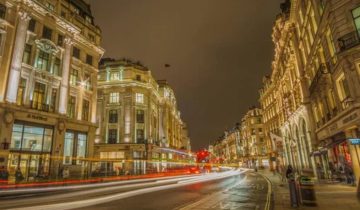Written by Lola Gabriel
Edited by CHIQIO
Keywords: perfume inspiration, natural scents, personal memories, cultural influence, perfume creation
Meta description: Discover the sources of inspiration for perfumers, from the natural environment and personal memories to cultural influences. Learn how raw materials, synthetic substances, and unique experiences spark creativity in perfume creation, leading to innovative and signature scents.
The art of perfume begins with ideation and inspiration. Inspirations from the environment, personal memories, culture and way of life! Creativity. A perfumers’ creativity can come from raw materials and natural ingredients as well as synthetic substances. This unbound fresh palette sparks the creative process of perfume production, creating an essence of individuality and a signature scent!
Environment
Perfumers find creative sparks within the natural environment because it’s arguably the most abundant source of perfume inspirations, from natural elements to abrupt actions and manufactured components creeping into the natural world. Fragrant flowers blooming in the wild, earthy soils, woody trees, smokey charcoal and petrol fumes.
Natural scents
Perfumers typically draw inspiration from natural aromas found in various environments. These aromas can be categorised into eight scents:
- Floral– rose, jasmine, lavender
- Woody– cedarwood, vetiver
- Green and herbal– mint, thyme
- Citrus– lemon, orange, bergamot
- Spicy– cinnamon, clove
- Earthy– oakmoss, mushrooms
- Aquatic– seaweed, driftwood
- Fruity– berry, apple
Manufactured scents
In a forest setting, perfumers may encounter various synthetic scents. Areas with camping and picnic sites feature campfires and barbecues; here the air smells of burning wood and charcoal, occasionally lingering alongside cooked foods which appears stronger in humid outdoor environments like forests.
People walking in these outdoor environments might leave behind traces of their daily care products like perfumes and creams. This allows perfumers to draw inspirations from competing products and elevate their creations by introducing combinations and adaptions. Ultimately, this has given rise to fragrance fusions!
While actions like burning and walking may cause residual scents, there are also other factors that inspire perfume creations.
Objects. Objects like camping gear, clothing and litter can sometimes produce an artificial aroma, which can be enhanced by hot air from humidity or the sun. For example, there is a distinct aspect about burning plastics. On its own it may appear harsh, but the chemical ingredients can be obtained to accompany alternative ingredients in perfumes. In turn, this ensures uniqueness and displays inspired innovation!
Personal memories
Scents experienced from both the indoors and outdoors can cement lasting impressions and represent timeless memories reminding people of what once was. Harsh and light smells are both effective in establishing memories but can have different requirements. While everyday experiences may be determined by light smells alongside atmospheric accompaniments, significant memories may feature the singularity of a harsh smell due to its intensity. Ultimately, personal memories can bring people back to different scenes, so perfumers use these memories as imaginative sources for perfume creations where specific scents from certain environments are replicated and able to evoke a timeless essence for its users.
Culture and way of life
Within different cultures there is emphasis on certain foods, materials and events, allowing perfumers to access popular scents and their origins. Cultural exposure benefits progression in the perfume industry, enabling people to exchange relevant knowledge like the origin and compatibility of the ingredients and whether it is skin, hair and pets friendly.
Overall, perfumers’ creativity comes from environments, memories and different cultures, with ingredients ranging between natural and synthetic scents. This allows adjustments to be made, encouraging new aromatic fusions which inspires innovative perfume creations!


 No products in the cart.
No products in the cart.